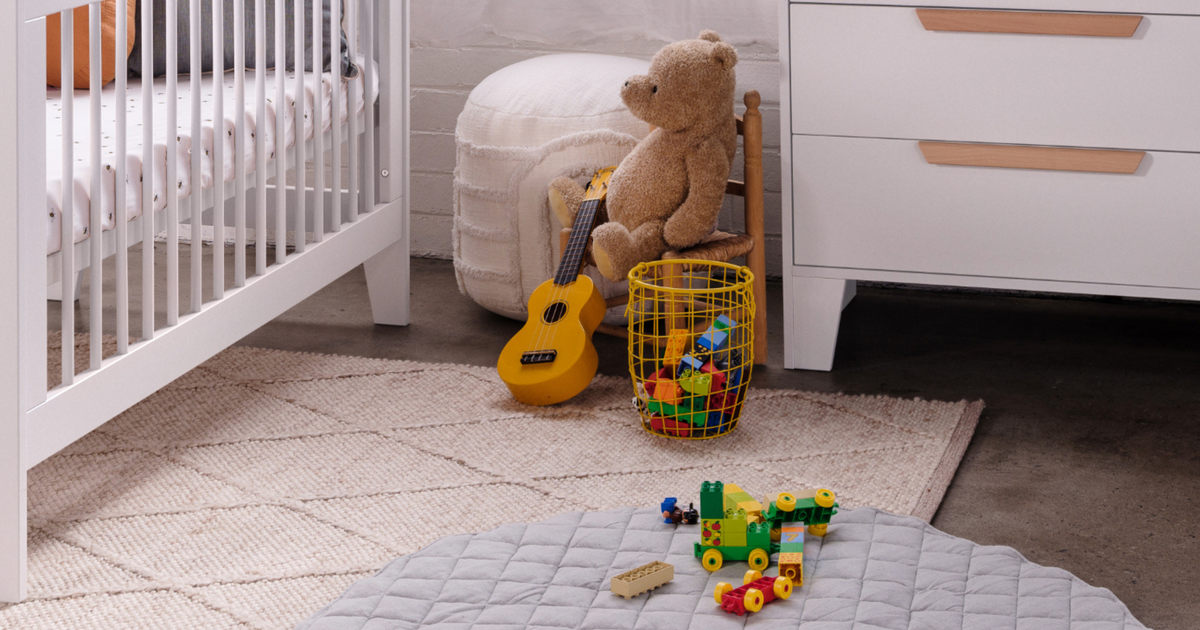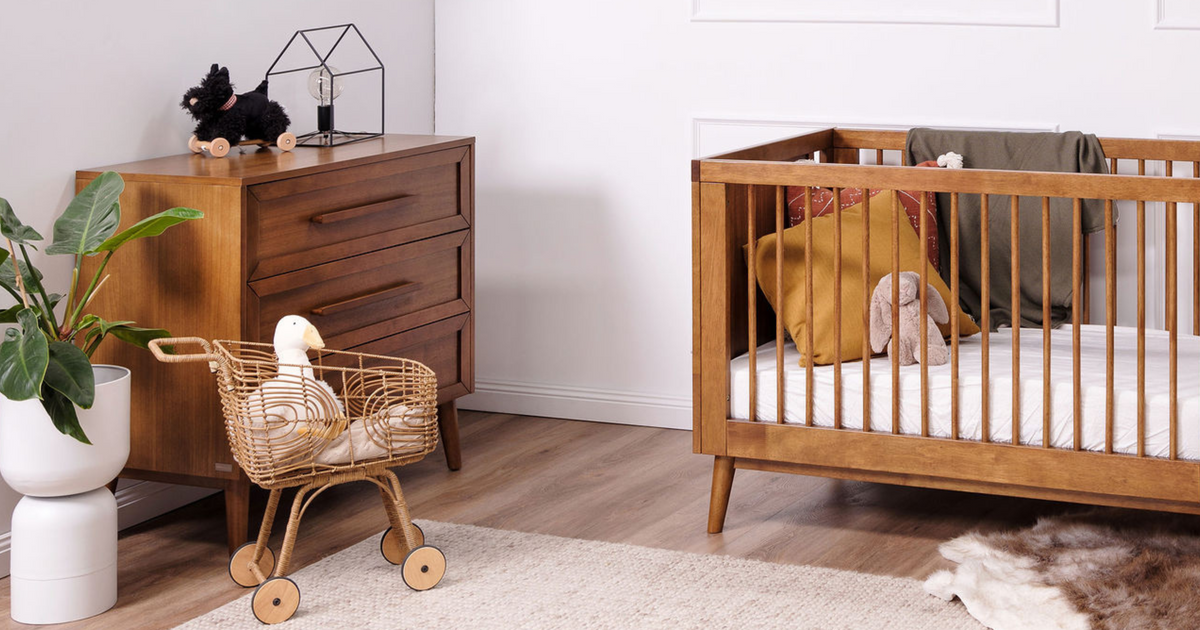How to clean and maintain your pram

When it comes to pram maintenance, the general advice you’ll hear from sage retailers and seasoned parents is to treat it like you would a car. Regular light cleaning helps keep things fresh, but every once in a while, a deep clean and maintenance check is necessary to keep things running smoothly and safely.
Not unlike a new car, you’ve likely spent hours researching the best pram for your family’s current and future needs. You may have invested in a premium pram, with the goal of it being used for future siblings. You barely ever leave the house without it, and won’t for a few years yet!
With regular use, your pram will also need regular cleaning - particularly as your kids enter the toddler years. Snack crumbs, yogurt stains and playground dirt have a habit of accumulating in the crevices.
To avoid losing your warranty, it’s important to review your pram’s manual before cleaning, as it will generally include basic care instructions for your specific model. Not only will it give you handy tips for removing components specific to your model for cleaning, but it will also remind you if certain fabrics are not machine washable.
So, where to begin?

Zero-effort cleaning tips to add into your weekly routine
Spending two minutes here and there won’t feel like too much of an intrusion on a busy schedule, but it will significantly extend the time needed between deep cleans.
-
Daily wipe-downs
The easiest thing you can do is a daily once-over with a wet cloth or baby wipe. It will keep any plastic or leather areas such as handlebars, cup holders and tray tables clean and sanitised for both your own and baby’s sakes. It can be your daily two-minute routine while you sit in the park and watch your little one play. Avoid alcohol wipes or heavy workshop wipes, as these can damage the surfaces of your pram. Instead,regular baby wipes, which most parents already tend to have on hand, are perfect!
-
Weekly vacuums
Next, a quick vacuum of the seat and storage pockets will stop dust and crumbs accumulating, keeping things fresh and making less work for you in the long run. You’re already vacuuming the house, why not add an extra 30 seconds on the pram?
To really get in the crevices, you can use a handheld vacuum, the hose attachment on a regular vacuum… or even hit two birds with one stone by using the vacuum at your local carwash while you’re cleaning your car! Although you may not need to vacuum your pram every week with a newborn, this will likely change as your child becomes more active and enters toddlerhood.
-
Wash the pram liner as needed
To save on cleaning time, one of the best things you can do is buy a pram liner insert. Not only does it protect your seat from stains if your little one has an accident or spills a drink (it happens), but it’s much faster to pop a liner into the wash than it is to remove, wash and dry the whole cover. The additional seat comfort from the padding is a bonus!
To keep things smelling fresh, you may want to wash the liner more frequently in the summer months when your little one is more likely to sweat. Take care to follow the cleaning instructions, as you may need to wash it on a delicate setting and air-dry it in the shade.
Compatible with all Cybex prams, the Cybex Summer Seat Liner is sweat-absorbent with 3D mesh backing to help keep your child cool in the summer months. Meanwhile, the natural wool properties of the Babyrest Lambskin Pram Liner allows it to absorb up to 30% of moisture before feeling wet, while staying warm in winter and cool in summer. Both options are great solutions for daily use.

Power-tips for a deep clean and service
In addition to regular light cleaning, deep cleaning is also an important part of pram maintenance if you want it to last long.
-
Handwash the fabric around twice a year
The good news is that if you’re using a pram liner insert, you’re unlikely to need to deep clean the pram’s seat or bassinet fabric more than twice a year. To clean the fabric, you can most likely hand wash it in lukewarm water (approx 30°C) using a gentle soap. Rinse with clean water and airdry in the shade to avoid discolouration in the sun. However, always research and follow your specific pram’s specific cleaning instructions.
Never use bleach or chemical detergents, and avoid dry cleaning the fabric or putting it in the tumble dryer at all cost. Keep in mind that you’re likely to use the pram most days, so it’s a good idea to save this task for a warm, sunny day (if possible).
-
Treat the wheels and moving parts around once a month
With busy lives, chances are your pram is getting a good workout! Regular, preventative lubrication of any moving parts like wheels and metal parts will not only keep your pram operating smoothly, but can help extend the life of your pram. If any parts of the pram have become stiff, difficult to operate or begin to squeak, lightly apply a silicone-based lubricant spray, ensuring that it really gets in between the moving parts. Wipe off any excess before use.
Always use the spray outdoors, away from children and ensure you have good ventilation. Take care to only use silicon-based lubricants, as common oil-based lubricants can deteriorate the components and joints of your pram. Some recommended types are Helmar H400 Silicon Spray, WD-40 Specialist Silicon Lubricant, Selleys Ezy Glide Dry Silicon Spray or SCA Silicone Spray, available from most local hardware or car accessory stores.
While you’re at it, remember to inspect the brakes, locking devices, brakes, seatbelt/ harness and any other joints to ensure they are secure and in good working order.
-
Wipe the frame with warm water as needed
Most premium prams use aluminium for their frames, which has been anodized to protect it from external factors like corrosion. These parts can be vulnerable to acidic cleaners and grease, which can cause ugly stains and discolouration. To avoid damaging your frame, simply clean with warm water and a soft cloth, followed by a quick towel dry.
-
Prevent rust and mould
If your pram has been exposed to wet weather, avoid rust by allowing it to fully dry in a warm, well-ventilated space before using it again. Damp prams are breeding grounds for rust and mildew, which can not only be bad for your little one, but damage the integrity (and therefore longevity) of your pram.
The same applies following a trip to the beach as salty air can encourage rust – just give it a quick wipe-down with warm water and towel dry, before leaving it to dry in a warm, well-ventilated space.
What to do if your pram is damaged or needs a replacement item
Cybex products are made to stringent safety and quality standards, and are designed to last. In the rare event that your product malfunctions or breaks before the warranty expires however, make sure to document the issue with photos to help us understand the problem, and notify our team so that we can discuss the best option for you. Learn more about how to navigate warranties here →
Damaged prams can be a danger to your little one, so it is important to keep them away until the pram is in safe, working order again.
If your product is still working, but you simply need a spare part such as a wheel, we may already stock it on our website. If the part you are looking for is not listed, feel free to contact us to see what the best solution may be.

For uncompromising functionality, comfort and style, discover the Cybex pram range →
Anstel has a team of passionate expert representatives. Get in touch with us today with any questions about your baby and toddler needs.
More pram-related blogs you may find interesting:
- How to navigate public transport with a pram in Australia
- Cybex Priam 2020 vs 2022 comparison: What's changed?
- Comparing the Cybex Balios S Lux, UPPAbaby Cruz V2 and Bugaboo Cameleon 3 Plus
- Cybex Sport: Introducing the Avi and Zeno sports strollers
- Will the Cybex e-Priam still work if the battery is flat?
Nursery tips and tricks:
- Babyrest Junior Pillow comparison: How to choose the right pillow for your child
- How to know when your toddler is ready for a junior bed
- What most parents overlook when preparing for their new baby
- How safe is your nursery? Your 10-step safety checklist



